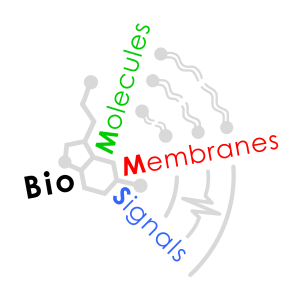Home | CV | Publications | Projects
Projects
(PC = project coordinator)
International
- 2018 – 2022: ESA contract №4000122781/18/NL/SC „Design and development of Space Greenhouse Microgravity Specific ENvironment Simulating Equipment (SG µg-SENSE)”
- 2016 – 2021: COST Action CA15226 “Climate-Smart Forestry in Mountain Regions” (CLIMO) [Memorandum of understanding (MoU): Approval date: 26/02/2016; End of Action:25/02/2021]
- 2015 – 2017: Bilateral co-operation between BAS and Estonian University if Life Sciences, Tartu (Estonia) “Biogenic volatile organic compounds and their function in plant adaptation to changing environment” (PC)
- 2012 – 2016: Forest, their Products and Services COST Action FP1204 “Green Infrastructure approach: linking environment with social aspects in studying and managing urban forests” [Memorandum of understanding (MoU), CSO Approval date: 21/11/2012; End of Action:20/11/2016]
- 2012 – 2016: “Team 2011” PAT – “Manipulation of volatile isoprenoids to improve plant performances against abiotic and biotic stresses” (MAN-VIP) (PC)
- 2011 – 2015: EU-Environment project “Effects of climate change on air pollution impacts and response strategies for European ecosystems” (ECLAIRE)
- 2010 – 2012: Bilateral co-operation between BAS and CNR (Italy) “Physiological role of biogenic isoprene against UV-B radiation stress” (PC)
- 2010 – 2012: Bilateral co-operation between BAS and HAS (Hungary) “Role of supramolecular organization of PSII – LHCII complex in isoprene emitting plants and its relation to thermoprotection”
- 2009 – 2011: Bilateral co-operation between BAS and TUBITAK (Turkey) “Comparative study of valuable medicinal plants of Achillea millefolium group: physiological and phytochemical approaches, and practical applications”
- 2007 – 2009: Bilateral co-operation between BAS and CNR (Italy) “Effect of phosphorus availability on the isoprene emission rate” (PC)
- 2006 – 2008: NATO LST.CLG 982412 “Plants from ultramafic sites as tools for remediation”
- 2006 – 2008: Bilateral co-operation between BAS and TUBITAK (Turkey) “Drought tolerance in cotton: a biochemical and physiological approach”
- 2004 – 2007: NATO EAP.RIG.981279 “Ecophysiological effects of isoprene emission” (PC)
- 2004 – 2006: Bilateral co-operation between BAS and CNR (Italy) “Present and future antioxidant action of plant isoprenoids” (PC)
- 2004 – 2006: Bilateral co-operation between BAS and HAS (Hungary) “Role of LHCII in the light harvesting and photoprotection”
- 2002 – 2004: Royal Society grant “Light stress tolerance in plants acclimated to different low-temperature regimes: Role of polyamines”
- 2002 – 2003: NATO, LST.CLG 978838 “Physiological role of endogenous isoprene under different environmental stresses” (PC)
- 2000 – 2003: Bilateral co-operation between BAS and TUBITAK (Turkey) “Reddening of cotton leaves: causes and biochemical mechanisms”
- 2000 – 2003: Bilateral co-operation between BAS and HAS (Hungary) “Mechanisms of injury and acclimation of the photosynthetic apparatus and cell metabolism in pea plants under high temperature stress”
- 1999 – 2000: NATO – LST.CLG 974973 “Low temperature induced photoinhibition in bean plants: recovery and acclimation”
- 1996 – 1999: Bilateral co-operation between Bulgarian Academy of Sciences (BAS) and Hungarian Academy of Sciences (HAS) “Effect of thermal stress on the macroorganization of antenna system and the regulation of dissipative ways in the chloroplasts of higher plants”
National
- 2021 – 2024: National Science Fund, Bulgaria, КP-06-Н49-7 „Natural zeolites as a base for space soil (ZeoSpace)“
- 2019 – 2022: National Science Fund, Bulgaria, KP-06 PN 36/8 “Exploring the interactions between innovative nanomaterials and higher plants – basis for development of sustainable nanoagronomic practices”
- 2019 – 2022: National Research Program: „Healthy nutrition for a strong bioeconomy and quality of life”
- 2014 – 2017: National Science Fund, Bulgaria, B02-8/2012 “Biogenic volatile organic compounds, global climate change, and plant adaptation potential to changing environment” (PC)
- 2009 – 2012: National Science Fund, Bulgaria, DO 02-137/2009 “Desiccation induced damages and ecological sustainability of plants evaluated in terms of open system thermodynamics model derived from noninvasive biophysical tests”
- 2007 – 2010: National Science Fund, Bulgaria, ТКB-1604 “Role of isoprene for improving of plant thermotolerance in elevated CO2 environment”
- 2007 –2010: National Science Fund, Bulgaria, G-5-02 “Biochemical and physiological characteristics of mutant Arabidopsis thaliana plants altered in the H2O2-induced programmed cell death”
- 1998 – 2001: National Council for Scientific Investigations, Bulgaria, SS-814 “Comparative physiological and biochemical characterization of different genotypes of wheat (Triticum aestivum L.) for determination of their drought tolerance and choice of selection criteria”
- 1996 – 1999: National Council for Scientific Investigations, Bulgaria, K-603 “Photoinhibition at the background of high and low temperature – common characteristics and differences”
- 1996 – 1998: National Council for Scientific Investigations, Bulgaria, MU-BAV7 “Influence of simulated acid rain on the functional activity of the photosynthetic apparatus” (PC)
- 1995 – 1998: National Council for Scientific Investigations, Bulgaria, K-505 “Molecular mechanisms of acclimation of pea plants to low temperatures”
- 1994 – 1997: National Council for Scientific Investigations, Bulgaria, K-408 “Mechanisms of recovery of the photosynthetic apparatus after temperature and water stress by means of physiologically active substances”
- 1992 – 1995: National Council for Scientific Investigations, Bulgaria, K-210 “Studies of harmful heavy metal effects on photosynthetic apparatus of pea plants”







